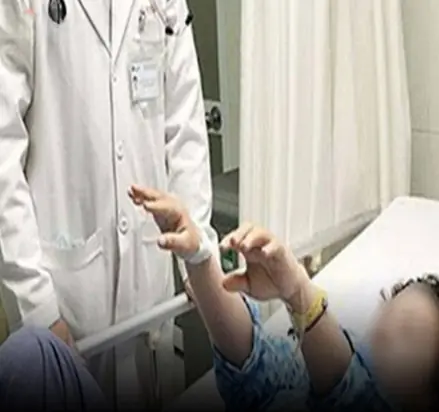
NASA’s Voyager 1 Probe Officially Crossed the 25-Billion-km Mark After Traveling for More Than 47 Years

In 1977, NASA was gearing up to launch Voyager 1, a tiny spacecraft with starry-eyed dreams. Fast-forward over 47 years, and that little guy’s still kicking it out there, roaming the cosmos like some interstellar wanderer with no plans to stop. Just recently, it hit a jaw-dropping milestone of 25 billion kilometers from Earth. It’s officially the farthest anything human-made has ever gone.
The probe wasn’t about to take it slow either. Even though its twin, Voyager 2, launched first, and it took the fast lane, blasting off on December 15, 1977, quickly overtaking its sibling. From there, it was all systems go, diving into the mysteries of our solar system and the vast, uncharted space beyond.
NASA had a vision, a big one. They wanted to take a peek at planets, moons, and the eerie quiet beyond the Sun’s reach. They packed Voyager 1 with tech that feels almost retro now, yet, against all odds, it’s still out there, chugging along. Every kilometer it racks up feels like a victory lap for humanity, a reminder of how far curiosity and grit can take us.
Beyond Our Wildest Hopes
Voyager 1 had big goals from the start. It wasn’t just about leaving home. It was about exploring planets, moons, and the vast unknown. By 1990, it kicked off the Voyager Interstellar Mission, pushing past the Sun’s reach. On August 25, 2012, it made history, slipping out of the heliosphere, our solar bubble, into interstellar space. The Voyager 1 Probe is still chatting with NASA from 164.7 AU (Astronomical Unit) away, dashing at 38,000 miles per hour. Can you believe it? A gadget from the 1970s, still sending updates.
Jupiter’s Wild Welcome
When Voyager 1 eyed Jupiter in 1978, it went all in, taking pics every 96 seconds from 165 million miles out. Those shots turned into a timelapse showing Jupiter’s stormy chaos, wilder than anyone guessed. On March 5, 1979, the Voyager 1 Probe swooped within 174,000 miles, spotting a faint ring and two new moons, Thebe and Metis. It was like a cosmic treasure hunt, uncovering secrets we didn’t even know to look for. Scientists were excited, and honestly, who wouldn’t be? It’s not every day you get a front-row seat to a planet’s hidden quirks.
Moons That Stole the Show

Voyager 1 didn’t stop at Jupiter. It got cozy with Io, Europa, and Ganymede, showing off weird, wonderful landscapes. Then, in November 1979, it hit Saturn, passing 78,000 miles above on November 12, 1980. The Voyager 1 Probe found five new moons, a G-ring, and “shepherd moons,” keeping things tidy. Titan’s foggy, nitrogen-packed air even sparked talk of life’s building blocks. Every photo was a gem, proving this little explorer wasn’t just passing through. It was rewriting our solar system’s story, one stunning snapshot at a time.
A Farewell Family Photo

After Saturn, Voyager 1 kept going, north at 3.5 AU per year, skipping Uranus and Neptune for that Titan detour. In 1990, it snapped 64 final shots from 40 AU away, a solar system selfie. Earth was a tiny “Pale Blue Dot,” as Carl Sagan called it, part of 67,000 pics the Voyager twins took. It’s a humbling reminder of how small we are. By February 17, 1998, Voyager 1 passed Pioneer 10 at 69.4 AU, claiming the title of farthest thing we’ve made. That little dot? It’s us, waving from afar.
Earth’s Mix Tape to the Stars
Voyager 1’s got flair too. It carries the Golden Record, a shiny disc with our story: 55 hellos, whale songs, Mozart, and 115 life pics. It’s our cosmic greeting card, instructions included. As of August 21, 2024, the Voyager 1 Probe is 164.7 AU out, still sending word home. It’s not just a machine. It’s our voice in the dark, a long-shot hello to whoever’s out there. Imagine some far-off being finding it someday, hearing our tunes and voices. That’s the stuff of dreams, right?
So what’s next? As of February 21, 2025, Voyager 1 is still cruising at 17 kilometers per second, deeper into the unknown. But its power’s fading. Those radioactive batteries in the Voyager 1 Probe are dying slowly, losing juice yearly. By 2030, it’ll likely go quiet, with no more cosmic updates. Until then, it’s soaking up rays and waves, giving us a peek beyond the Sun.
A Forever Journey

When it shuts off, Voyager 1 won’t quit moving. It’ll drift on, carrying that Golden Record toward a star in Camelopardalis, 1.6 light-years close in 40,000 years. Will it get picked up? Who knows. For now, it’s our proud little explorer showing what happens when we dream big. The Voyager 1 Probe has changed how we see space, and it’s got everyone wondering: what’s the next wild adventure we’ll chase among the stars? It’s a legacy that keeps us looking up.
News in the same category


Drink coconut water on an empty stomach for 7 days, kill 10 birds with one stone: it's a waste not to try it

Throw an old sock into the toilet tank: a surprisingly useful trick many people will copy once they know it — I wish I’d learned this sooner

Insert a sheet of paper into the refrigerator door gap: a small trick with big benefits that can significantly reduce your household electricity bill

Is there a difference in lifespan between people who nap and those who don’t? Research reveals surprising finding

Adding salt to beer: 9 out of 10 people actually need this trick — you’ll thank me once you learn it

‘BLO.OD RAIN’ turns the beach red, locals panic and recall prophecies of the end of the world

Frequently waking up between 3–4 am? Warning signs of 5 silent health problems many people ignore

A village with almost no cancer cases—thanks to a root vegetable that’s cheap and eaten daily

5 foods you should never keep overnight

The Italian Village Known as “The Healthiest in the World” — Thanks to One Everyday Spice

Green or Orange Dot on Your Phone? Experts Warn It Could Be a Privacy Alert

To know if your internal o.r.gans are infected, just look at your feet. If there are 3 signs, you need to go to the emergency room

Health Warning: Never Do This While Showering — It Can Be Far More Dangerous Than You Thin

A Simple Home Hack: Light a Candle in a Pineapple Shell and Enjoy Unexpected Benefits

Food Safety Warning: 3 Types of Tofu You Should Never Buy, Even at a Bargain Price

Why people with green eyes are so fascinating?

Why you shouldn’t build a toilet under the stairs?

Why you should leave the bathroom light on when staying in a hotel or motel?
News Post

Always Throw a Water Bottle Under the Hotel Bed: A Flight Attendant Reveals Why

Drinking These 4 Common Beverages Could Be Harming Your Kid.neys

What a Daily Banana Could Mean for Your Blo.od Pressure?

When a Family Member Passes Away, Don’t Throw Away These 4 Important Things

Waking Up at Night to Urinate? Read This

A 14-Year-Old Girl Diagnosed with Colorectal Can.cer: Doctors Warn—It’s Better for Children to Skip Breakfast Than Eat These 4 Types

Every woman likes to be touched in these "3 places" on her body, especially the first place

Plants That May Attract Snakes to Your Home: What You Should Know

Garlic peels are not trash, don't rush to throw them away

Say Goodbye to Joint and Foot Pain with a Relaxing Rosemary Bath

If You See A Man With One Painted Fingernail, Here’s What It Means

Dog ticks bit 3 people in a family, 2 died: If you can't keep them clean, don't keep them, they're full of diseases

Don’t Ignore These 7 Early Heart Attack Warning Signs

Drink coconut water on an empty stomach for 7 days, kill 10 birds with one stone: it's a waste not to try it

8 Natural Remedies for Sinus Infections That Work Without Antibiotics

This One Superfood Could Tackle Major Health Issues—Here’s What You Need To Know

If You’re Farting More Than 25 Times a Day—It Might Be a Sign Your Body is Trying to Warn You

Preventing Stroke At Any Age: 3 “Don’ts” After Meals—And 4 “Don’ts” Before Bed

Why You Might See Unusual White Bumps On Your Lips Or Genitals
